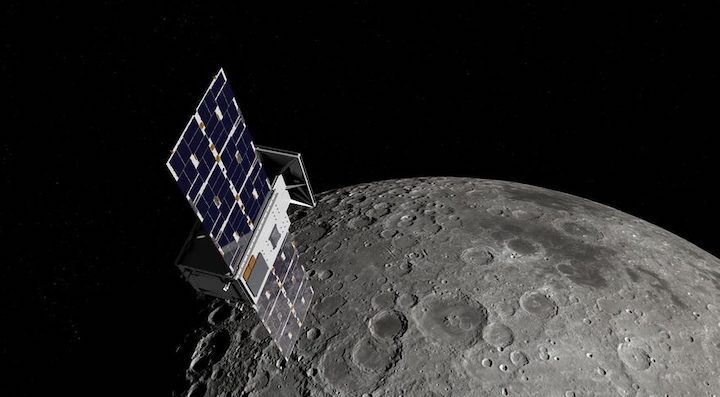24.02.2022
CAPSTONE lunar cubesat mission to launch this spring

WASHINGTON — A cubesat mission to test a lunar orbit critical to NASA’s Artemis program is in the final stages of preparations for a launch this spring.
The Cislunar Autonomous Positioning System Technology Operations and Navigation Experiment, or CAPSTONE, spacecraft is a cubesat mission that will test operations in the near-rectilinear halo orbit (NRHO) around the moon that will be used by Artemis missions, including the lunar Gateway. NASA selected Colorado-based Advanced Space to develop the mission in 2019.
The spacecraft is nearly ready for launch. “We are at a really critical stage for the mission. The hardware is all together and is going into testing,” Brad Cheetham, chief executive of Advanced Space, said during a panel at the 24th Annual FAA Commercial Space Transportation Conference Feb. 17.
Advanced Space said Feb. 18 that it completed the fourth in a series of operational readiness tests for CAPSTONE, simulating a week of operations in lunar orbit. That included tests of one aspect of the mission, crosslinks with the Lunar Reconnaissance Orbiter spacecraft to determine its position without the assistance of ground stations. “It’s basically a peer-to-peer GPS-like system for the moon,” said Cheetham.
The spacecraft itself, built by Tyvak Nano-Satellite Systems, is what he called a “12U XL” cubesat, a 12-unit cubesat with a radio tower on top that extends its size. It will launch on a Rocket Lab Electron rocket using a version of that company’s Photon satellite bus to send the stage on a lunar trajectory.
CAPSTONE will not go directly to the moon but instead follow a “ballistic lunar transfer” that will take it out as far as 1.5 million kilometers before returning into lunar orbit. That transfer, which will take about three months to complete, it designed to save propellant and make the mission feasible using a cubesat launched on a small rocket.
“It’s a key enabling technology for CAPSTONE,” Cheetham said of that trajectory. “We trade about three months of transfer time for a significant reduction of the amount of fuel we have to bring.”
Besides the positioning demonstration, CAPSTONE will help better understand operations in the near-rectilinear halo orbit, which has not been previously used. “This really gets to us operating in this NRHO,” he said, including the dynamics of an orbit influenced by both the Earth and moon. “It’s a capability we see extending not just for CAPSTONE and Gateway but also for a lot of future lunar missions.”
While CAPSTONE is a NASA-funded mission, the spacecraft itself is owned and operated by Advanced Space. “We’re operating it and providing the data products that help inform Gateway and other programs,” he said. That included, he said, getting a payload approval from the FAA’s Office of Commercial Space Transportation for a commercial launch of CAPSTONE.
Neither NASA nor Advanced Space have announced a specific launch date for the mission. In October, NASA announced the mission was scheduled to launch in March 2022 after previously scheduled for the fourth quarter of 2021. Rocket Lab said at the time that lockdowns in New Zealand, where the Electron launch will take place, contributed to the delay.
NASA still lists a March launch for CAPSTONE, but the mission is likely to lift off later in the spring. “We are delivering this spring NASA’s CAPSTONE mission,” said Lars Hoffman, senior vice president of Rocket Lab, during a separate presentation at the conference Feb. 16. “We’re going to be racing Artemis 1 to the pad this spring.” Artemis 1, the first launch of the Space Launch System, is expected to fly no earlier than April.
Quelle: SN

